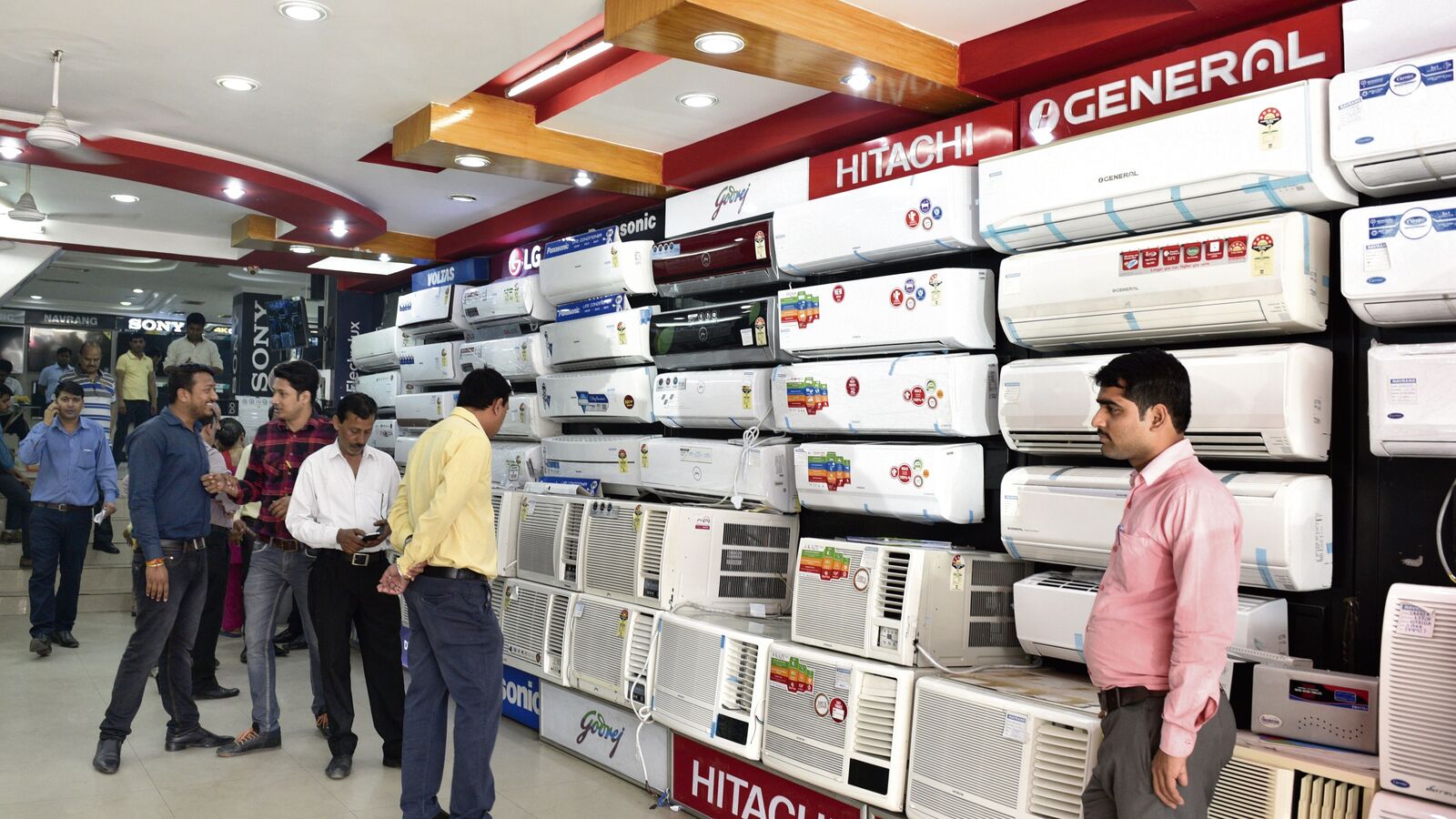A stable supply of electricity to most parts of the country and lower household penetration of air conditioners—just about 7-8% of families in India have ACs in their homes – are encouraging people to buy cooling appliances, companies said.
Hotter and longer summers are also driving consumers across income brackets to buy these products, with some prioritizing purchase of air conditioners over other large appliances.
Also Read | Livpure enters air conditioner category
“AC consumption is going up significantly, due to low penetration and with climate change impacting weather cycles. Also, against one refrigerator per household, we do expect families to purchase at least 2-3 air conditioners per household. Air conditioners are not only getting consumed in concrete buildings but also in kaccha households too,” Kamal Nandi, business head and executive vice-president, appliances business, Godrej Enterprises Group, said. “Power situation has also improved drastically. So, in some households we do see the hierarchy of purchase has changed from consumers first buying air conditioners before buying, say, a refrigerator.”
In 2021, the company had announced plans to invest ₹100 crore across its AC manufacturing units in India. Nandi said the company is in the process of finalizing details for expanding its AC capacity for the next few years. “We are in the process of doing that; we are covered with our current capacity till next year,” he said.
Also Read | LIC decreases stake by 2 percent in air conditioners giant Voltas
The Indian room air conditioner industry grew 20-25% year-on-year in sales volumes to reach its record high levels of 12-12.5 million units in FY25, per estimates by ratings firm ICRA. Nandi said air conditioner penetration is expected to go up from the current sub-10% to 40% over the next two decades. According to estimates, India’s air conditioner industry is projected to double in volumes by FY30.
In contrast, Indians bought 10 million washing machine units in FY24; the product category has a household penetration of 13-14%. Meanwhile, refrigerators have a household penetration level of 33%, according to data from electronics contract manufacturer Dixon Technologies (India) Ltd’s annual report for FY24.
Factors like rising temperatures, increasing need for the number of room air conditioners per household, growing urbanisation, improved disposable income, and favourable consumer financing options are expected to drive growth for these cooling appliances in the next few years, ICRA said in an October report.
Meanwhile, others said companies have also stepped up efforts when it comes to servicing as well as easy installments to drive up demand.
“It’s a very under-penetrated category. AC adoption is increasing due to increased disposable income, availability of the electricity, especially in upcountry markets, as well as affordability offers—where you can buy an AC for as low as ₹3,000 per month via installments, without any down payment,” Ghufran Alam, vice-president, digital appliances business at Samsung said in an interview with Mint on Thursday.
Samsung has increased its distribution footprint by 40% over the past 12 months. The company’s air conditioner business grew 2x in the March quarter. The company declined to comment on its production capacity for air conditioners.
Air conditioner maker Blue Star is expected to invest ₹200 crore in FY26 to ramp up its air conditioner capacity at its existing plant in Sri City, Andhra Pradesh. The company also operates two plants in Himachal Pradesh for manufacturing room air conditioners.
Blue Star’s current production capacity is around 1.4 million room ACs a year, with plans for gradual expansion to 1.8 million units in the near future. Overall, Blue Star plans to spend over ₹50 crore on advertising for its AC business during the ongoing summer season.
“Demand in smaller towns is growing faster, albeit on a smaller base. The ownership of ACs in households is increasing, driven by first-time consumers and replacement cycles,” B. Thiagarajan, managing director, Blue Star Ltd, said in an interview with Mint on Thursday.
Hot temperatures aside, it also helps that electrification in India has improved dramatically over the past decade, prompting households to buy all kinds of home appliances.
Earlier this week, sewing machine maker Singer India expanded its relatively small room air cooler business with the launch of “cloud X cool fan”.
“Among consumer durables—categories that are seeing some of the highest growth (apart from smartphones) are cooling devices. This is driven by both rising temperatures as well as lifestyle changes,” said Rakesh Khanna, vice-chairman & managing director, Singer India. The company is currently outsourcing manufacturing to third-party contractors but may consider setting up its own plant once the business scales.
Household air cooler penetration is expected to reach 25.6% by 2025. Air coolers are the third most utilized product in Indian households after refrigerator and television, according to a 2024 report by brokerage Motilal Oswal.
Air conditioner,AC,cooler,cooling appliances,summers,Kamal Nandi,Godrej Enterprises Group,ICRA,Dixon Technologies,Samsung,Blue Star,Singer India,heat
#temperatures #soar #consumers #rush #air #conditioners #coolers #beat #heat
